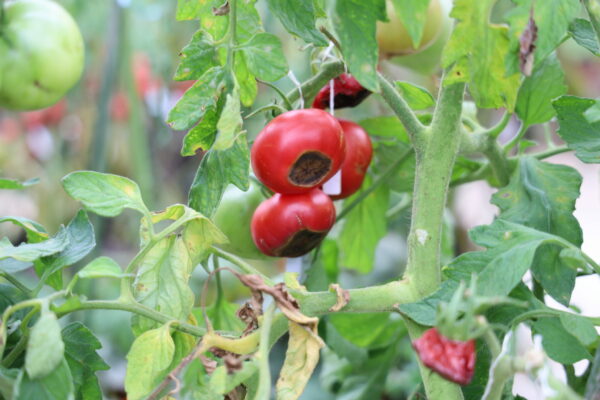Living beings need elements to develop properly. The study of ionomics measures and analyses the element accumulations in living organisms to determine which mineral nutrients are required and not required for growth. Associate Professor Toshihiro Watanabe from Hokkaido University’s Research Faculty of Agriculture applies this approach to learn about mineral accumulation in both plants and soil, in addition to inter-element interactions.
“In general, plants require 17 elements to flourish. Some of these, such as carbon, hydrogen, and oxygen are plentiful in air, soil, and water. The other elements may need to be supplied through fertilizers and other supplements,” explained Watanabe who is working in the Laboratory of Plant Nutrients.
To examine the elemental composition of any vegetation, the Research Faculty of Agriculture is equipped with an Inductively Coupled Plasma Mass Spectrometry (ICP-MS) instrument. This equipment is used to ionize the samples and detect the concentrations of metals, metalloids, and nonmetal elements.
By utilizing this technique, Watanabe’s laboratory has successfully established multiple collaborations, including an international research project concluded in 2007. In the 2007 study, Watanabe and his research team collected over 2,000 leaf samples, representing 670 species and 138 families of plants found throughout Japan. The results show trends and patterns in mineral accumulation in these plants.
“Some elements provided by soil are overlooked as being non-essential for plants. In many cases, however, those non-essential elements can cause problems. For instance, cadmium in Earth’s crust is toxic for plants and for human health, if consumed. Other problems that may occur include a decrease in crop production and contamination of the edible parts. Therefore, it is necessary to measure and maintain soil’s elements through proper fertilization,” said Watanabe.
However, what are defined as essential and non-essential elements differ across plant varieties. One of Watanabe’s research interests is focused on Melastoma (Melastoma malabathricum), a plant native to tropical areas in the Southeast Asia region. This plant thrives in acidic soil, which makes it a peculiar case considering that acidic soil generally attacks roots, hindering plant growth. Watanabe expects that the high amount of aluminum the plant contains plays an important role in making it tolerant to strongly acidic soils.
“We are concerned not only with wild plants, but also with vegetables, particularly the mineral contents of both the edible and non-edible parts. It is very important to know what elements are contained in our food to suit our diet,” said Watanabe. “For instance, our findings show that komatsuna and bok choy contain higher zinc concentrations, which is beneficial for human health. On the other hand, we found out that green onion contains low zinc concentrations.”
By using ionomics, Watanabe showed that toxic elements are not equally taken up across cultivars; different cultivars absorbed elements at different rates. Moreover, parts of a plant have different concentration levels of elements. Watanabe’s findings detected toxic elements for humans in some commonly eaten parts of common vegetables. Selective breeding of these cultivars can help to reduce toxic element absorption.
Furthermore, ionomics application on plants could be used to understand a plant’s physiology. Differences in the inorganic components of plants could lead to different physiological status. Watanabe conducted mineral profiling of two tomato cultivars affected bya plant disorder called Blossom-End Rot (BER).
“BER is marked by the rotting of the bottom part of a fruit and has been causing a decrease in tomato production. Its occurrence is often related to calcium deficiency in the fruit, but our findings suggested that this was not always the case; even though we supplied enough calcium through fertilization in the field, BER still occurred,” explained Watanabe.
Watanabe did not negate calcium deficiency as a factor in this physiological disorder, but his findings suggested that other factors, such as transport of potassium, contribute to the rotting. Research on this topic is still ongoing.
Water, light, and other factors that contribute to the mineral transport of plants from root to the other parts also should not be ignored. In fact, Watanabe was also involved in a collaborative project to examine the salt tolerance of rice varieties grown in the Mekong Delta region of Vietnam. In these areas, the soil has closer contact with seawater thus exposing the risk of high salinity for the plant.
A home-gardener himself, Watanabe admitted that gardening is a tricky practice, especially if one wants to obtain products with good flavor. “From my personal experience of growing spinach, I came to the conclusion that maintaining the pH level of the soil is very important. Here in Japan, most of the soils are acidic soils: they require constant supply of lime to increase the pH level in addition to optimum fertilization for a good yield.”
Article source: Hokkaido University
Author: Aprilia Agatha Gunawan
Image: Tomato (Solanum lycopersicum cv. M82) showing BER symptoms. Credit: Manami Kawamoto.






